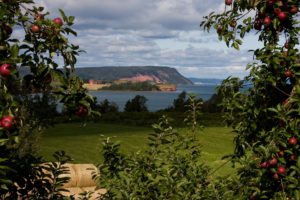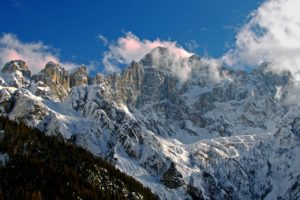America’s Least Crowded National Parks
America’s Least Crowded National Parks
Over 250 million people in the United States travel to national parks each year. However, there are those who prefer to seek isolated wind-swept beaches and deserted mountain trails, rather than face the crowds sure to be present in the nation’s most popular parks. Those searching for a calmer national park experience may wish to consider the following 10 least crowded national parks:
Voyageurs National Park-Minnesota
The rivers and lakes surrounding the Voyageurs National Park located near International Falls, Minnesota, were once busy with continual water traffic as the licensed fur traders of the era made their way in boats and canoes to peddle items such as animal pelts and dry goods. Still famous for its water sports, including kayaking, canoeing and boating, the Voyageurs National Park is a secluded paradise for those who enjoy a day on the water.

Lake Clark National Park-Alaska
The Alaskan wilderness has a timeless appeal for people of all ages and from all walks of life. Those wondering just how much solitude can be found in a public park will be pleased to discover that Lake Clark National Park and Preservation Center, situated near Anchorage, Alaska, offers peaceful seclusion almost any time of the year. Waterfalls, glaciers, active volcanoes, lakes, an arctic tundra and spectacular mountain ranges comprise the landscape of this outstanding park. Sled dog teams and snowmobiles are still considered the best way to travel through the area, and most visitors find that these methods of transportation enhance their park experience.

National Park of American Samoa
Few national parks can boast a coral reef or a rain forest, yet the National Park of American Samoa can lay claim to both. The park is comprised of three islands, and provides a panoramic view of various wildlife such as humpback whales and flying foxes. It is the only American park located south of the equator.

Isle Royale National Park-Michigan
The Isle Royale National Park, an island park in Lake Superior, is named after a secluded area located close to the Canadian border. Isle Royale is Lake Superior’s largest island and is only accessible by seaplane or boat. Due to the island’s remote location, only about one-third of the mammals that exist on the mainland are found on the island, and it is the only known location where moose and wolves cohabit in the absence of bears.
North Cascades National Park-Washington State
The North Cascades National Park in the state of Washington offers visitors a chance to experience Alaskan-type wilderness without having some of the inconveniences associated with a trek to Alaska itself. In addition to cougars, moose and bears, the park has more glaciers than any other state except Alaska. Popular among hikers and backpackers, this northern Washington park offers 400 miles of trails where one-of-a-kind sights can be observed.

Dry Tortugas National Park-Florida
Adventure lovers searching for lost treasure and sunken pirate ships will thoroughly enjoy a trip to the Dry Tortugas National Park in Florida. Located 70 miles west of Key West, the park is named after the Dry Tortuga–Turtle–islands, thus named because of the numerous sea turtles and lack of surface fresh water–dry water–found when the island was first discovered by Ponce de Leon. Additionally, the Dry Tortugas National Park is ideal for viewing migratory birds each spring. Bird lovers can indulge in observing over 300 different species that live within the park.
Great Basin National Park-Nevada
Located close to the Nevada-Utah border, the Great Basin National Park is famous for its spectacular sunsets and clear night skies. Those interested in astronomy will find that not many parks in the nation, or even the world, can rival the panoramic cosmos that can be observed from within the Great Basin park. Anyone who is intrigued and mystified by the beautiful Nevada dessert landscape will not want to miss a trip to this secluded, sandy paradise.
Congaree Marshy Park-South Carolina
Famous for marshes and swamps teeming with amphibian and fowl life, South Carolina has its own brand of wilderness that appeals to visitors in search of rest and solitude. Located just south of Charleston, the Congaree Marchy Park can be explored by foot or canoe and those who enjoy walking and hiking will be pleased to find there is a 2.5 mile boardwalk as well as 20 miles of hiking trails within the park. However, mosquitoes commonly reach pest levels, especially during summer, so it is recommended that one bring a powerful insect repellent when spending time in Congaree Park.

Kobuk Valley National Park, Alaska
The Kobuk Valley National Park is situated above the Arctic Circle and offers extreme isolation to those who venture within its borders. There are no camping facilities or visitors centers, and the park can only be accessed by plane. Satellite phones work but cell phones will not be able to pick up a signal in the park. This park is not recommended for those who have no experience in primitive settings; however, for the right individual, a trip to this Alaskan wilderness can be a challenging and enjoyable endeavor.

Regardless of the various reasons people may have for seeking quiet isolation, the aforementioned parks offer the ideal setting for individuals who find themselves in this category. For those who wish to revitalize, eliminate stress, or simply commune with nature, roads less traveled are often the best choice for a quick escape from every day life.






Leave a Reply